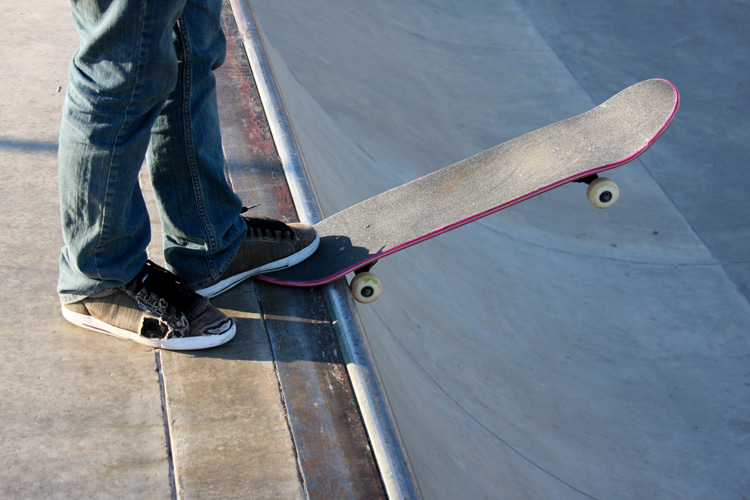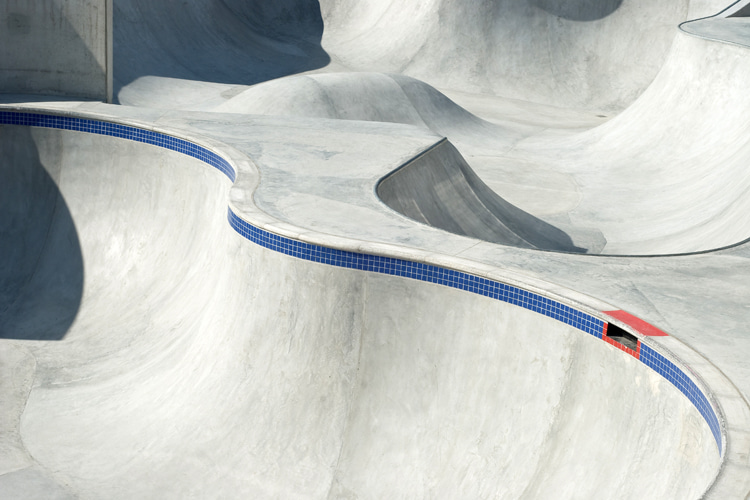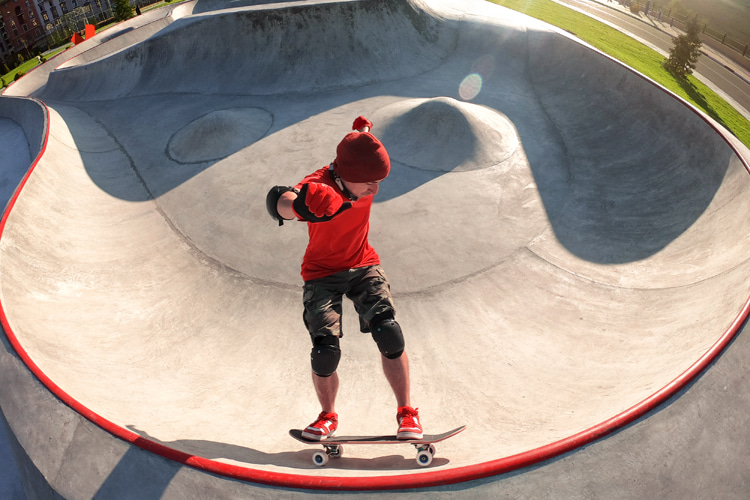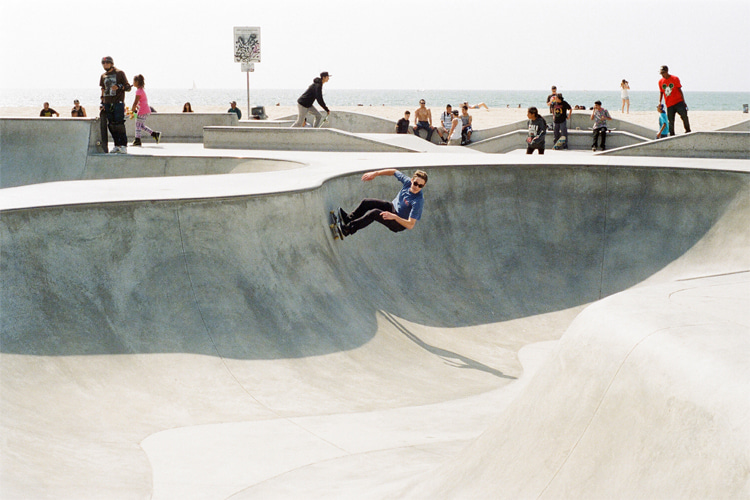Learn how to ride a skateboard in a bowl or pool. Follow our simple step-by-step tutorial on the fundamentals of bowl skating.
Most of the skaters out there are recreational riders who just want to cruise around and have fun.
For the vast and silent majority of millions, they’re happy with the basics of skateboarding – finding the balance, pumping for speed, carving, turning, braking, and stopping the board.
But what about getting the four wheels rolling on a smooth bowl or pool? How hard is that for a beginner skateboarder who can confidently ride on a boardwalk or busy city street?
Fortunately, it’s not mission impossible. The trick is to approach it conservatively, slowly and steadily, and through consolidation of the different stages of difficulty.
Finally, get to the skatepark or bowl early to avoid jumping into a hardcore session where everyone is shredding.
When you’re learning, you don’t want to get in anyone’s way and be responsible for painful, unwanted injuries.
Here are some tips that can hopefully get you started skating the bowl.


The Skateboard Setup
Learning how to skate a bowl could a little bit intimidating.
The whole cement structure, the coping sticking out a couple of inches, and kids flying around can be an overwhelming and uncomfortable mix, but it’s all a matter of practice and getting used to it.
The first thing you need to do is to choose the right skateboard size for your experience and weight.
When it comes to the type of gear, grab a mini-cruiser or get a standard, double-kick popsicle skateboard equipped with 56-to-60 mm wheels.
With bigger wheels, you’ll cover more ground every time that wheel rotates, making it easier to cruise around the bowl.
Also, make sure your skate setup includes a wide truck system for extra control and stability.
Nevertheless, you’ll need a loose feel on those trucks so that when you’re pressing on your toes or your heels, you’ll be able to turn, pump and carve well.
So, take a moment to check your trucks and make sure that they’re loose enough to be skating in a bowl.
You can do this by standing on the board and leaning on your heels and then on your toes.
If you’re able to lean a little bit to both sides without the wheels coming off the ground, it’s all good.
If not, you may want to loosen up the bolts before you get started in the bowl.


Getting Started
The first thing you should do is start rolling inside the bowl.
Instead of dropping or rolling in straight from the top, go down to the bottom of the ramp and start your run from down there.
Cruise around for a while just to get used to the cement and its curvy lines.
Adopt a normal riding position, with your front foot over the front wheels and your back foot over the tail.


Carving
The first and most important technique you need to learn is carving.
Knowing how to carve around a tight corner will allow you to roll away with much more speed than you had when you started the carve.
The trick is similar to riding back and forth on a half pipe.
Bend your knees and push off of the ramp at certain, particular points along the way.
The goal is to increase the speed you gain when you transition from going downhill to flat or decrease the speed you lose when you go from flat to uphill.
There are three places where you can pump to carve the corner of a bowl.
The first is transitioning from flat to the side of the ramp. The second takes place as you go around each corner, and finally – the third – as you transition back to flat ground.
On second pumping zone – around each corner – bend your knees and push off with your legs just as your front wheels are about to make contact with the corner.
You’ll notice that you’ll add momentum in that direction and come out the other side with more speed than you started.
Once you feel comfortable pumping the corners of the bowl, start carving these corners slowly and just hitting the bottom part of them, then slowly increasing your speed and height.
Remember that the faster you’re riding, the higher up you’ll end up going in each of the corners of the ramp.
Interestingly, many skaters feel that the backside carve is easier to learn than the frontside carve since you’re able to look down at the bottom of the ramp the entire time.
Figure out what’s easier for you as you get more and more comfortable in the pool.
In big and flowy circular ramps, approach the ramp diagonally so that you have some upward momentum and some sideways momentum as you perform the carve, as opposed to pure sideways momentum.
Always keep your eyes focused on where you want to go. Wherever your head is pointing, you and your board are naturally going to follow in that direction.
As you enter the uphill part of the ramp, bend your knees and push off of the ground, and then allow the board to follow the shape of the ramp, keeping your body perpendicular to your board for the duration of the carve.
During this carve, you won’t feel like you’re getting that big of a boost as you go around the corner, but rather, just maintain your posture as you ride around it.
Then, on the way back down, you can add another pump to help increase your momentum again as you transition to the flat part at the bottom of the bowl.
Experiment with different lines through the bowl to find out which ones will give you the most speed.
Carving up and down a skate bowl is a fundamental pool skateboarding technique.
Once you master it, you’ll be ready to fly around the corners of the bowl and perform intermediate and advanced bowl skating tricks and maneuvers.


Planning the Lines
Riding a bowl on a skateboard is similar to riding a wave on a surfboard – in both sports, you must plan your lines.
In a bowl, you have to be constantly looking ahead and planning your ride over the cement.
If you’re eyeing a specific wall, you’ll need to figure out how to drop in, places where to carve, and then hit that wall.
By breaking it down into smaller go-to steps, it will be easier for you to get the feeling of riding a good line inside the pool, and to know where you can keep carving and gaining speed.
A well-ridden line will shoot you into another line and navigate the pool flawlessly and endlessly.




Recent Comments